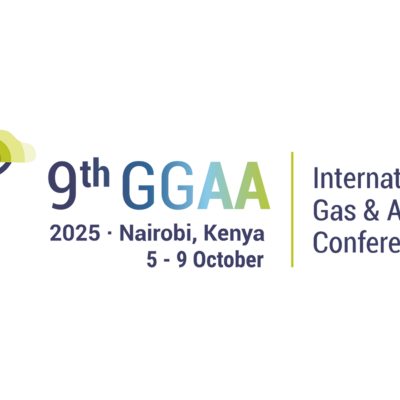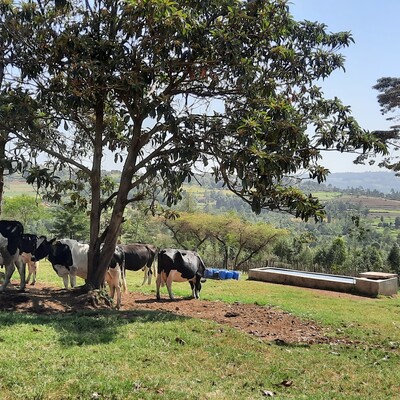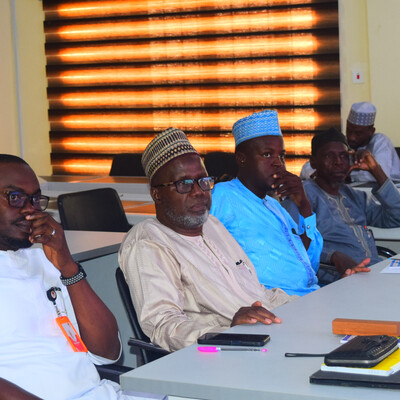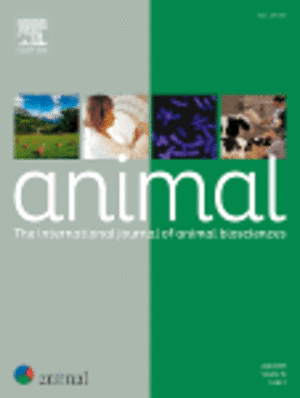

Indian Council of Agricultural Research reviews collaborative livestock development projects undertaken by ILRI
The Indian Council of Agricultural Research (ICAR) and the International Livestock Research Institute (ILRI) held an annual review meeting on 27 February 2023 to assess the progress of collaborative research work undertaken in 2022 and plan research activities for 2023. Under review were projects based on a memorandum of understanding signed on 25 February 2019 for the period 2019–2022 and undertaken in four of India’s priority areas: feed and fodder development, livestock-generated methane emissions and their mitigation, backyard poultry genomics and animal disease economics.
In his opening remarks at the event held at the National Agricultural Science Complex in New Delhi, Himanshu Pathak, director general of ICAR and secretary of the Department of Agricultural Research and Education (DARE), highlighted the importance of ICAR-CGIAR collaborations. He cited successes in germplasm exchange, capacity building of scientists, publications and policy documents, and suggested that CGIAR centres be engaged in the Subject Matter Divisions (SMDs) for preparation of future work plans.
‘We should leverage South-South cooperation in the development of technologies and upscale these innovations through private partner investments. The technologies developed in India through these collaborative projects should be disseminated to other countries and regions in need with the help of CGIAR,’ Pathak told the gathering.
His speech was followed by presentations on the progress made in ICAR-ILRI joint projects in 2022 and the activities to be taken up in 2023. Habibar Rahman, ILRI’s regional representative for South Asia, began this session by presenting the ‘Action taken report’ on the recommendations that emerged during the last annual and mid-term review meetings held on 7 February and 2 August 2022, respectively.
The review focused on collaborative projects as well as the training-cum-workshop on ‘Advanced biotechnological approaches to augment productivity in poultry for ensuring food and nutritional security.’ The event was organized at ICAR’s Directorate of Poultry Research, Hyderabad, for more than 25 participants from ICAR institutes, state animal science universities and state veterinary colleges.
Rahman reported that the anti-methanogenic product developed under the methane emission and mitigation project named ‘Harit Dhara’ had been scaled up through commercialization by three firms, including Bharatiya Agro Industries Foundation, and that the technology was also available on the AgrInnovate portal for further non-exclusive licensing. He also announced that the 75K SNP chip developed under the Backyard Poultry Genomics project called ‘Indichick’ would soon be released by the minister for Agriculture and Farmers’ Welfare. The chip, so-named because 75,192 (75K) single-nucleotide polymorphisms (SNPs) were selected for its development, will be used for the genetic improvement of indigenous and exotic chicken varieties.
Tarun Kumar Bhattacharya, director, ICAR-National Research Centre on Equines, further elaborated how the chip was developed under the backyard poultry genomics project. From the team’s research, 7 million SNPs were detected across 10 chicken breeds and 2 lines, out of which 119,680 SNPs were identified for inclusion in the 75K SNP chip. After validation, 75,192 SNPs were finally used in the chip, where there were 62 breed-specific SNPs. ‘The project also conducted a genome-wide association study that identified a panel of markers having a significant effect on egg production in Kadaknath chicken,' said Bhattacharya.
Additional information on Harit Dhara and the ICAR-ILRI collaborative project on methane mission and its mitigation was given by Raghavendra Bhatta, director of ICAR’s National Institute of Animal Nutrition and Physiology and the project’s principal investigator. Bhatta said the anti-methanogenic product had the potential to reduce enteric methane emission by 20%. Among the 25 sulphate-reducing bacteria isolated from buffalo rumen, isolate RM 207 (Tissierella praeacuta) was found to be the best at reducing methane production.
‘Comparing enteric methane emissions among Murrah buffaloes, Tharparkar (indigenous cattle) and Vrindavani crossbred cattle fed on 30% para grass and 70% ragi (finger millet) straw revealed no difference in enteric methane emission, intake and digestibility of nutrients, and methane abundance versus functionality analysis of the rumen. Based on the study from the ICAR-Indian Veterinary Research Institute Centre, the supplementation of sulphur at 0.35% (including 0.16% of basal diet) of dry matter intake reduced methane emission by 26% in buffaloes,’ Bhatta explained.
Regarding the project on animal disease economics, Gurrappanaidu Govindaraj, principal scientist from ICAR-National Institute of Veterinary Epidemiology and Disease Informatics, presented findings from the assessment of the economic impact of brucellosis in cattle and buffaloes. Carried out in four Indian states, he said the study found varying results: ‘The economic loss due to brucellosis in cattle and buffaloes was 128 crores (USD 15.23 million) in Karnataka, and 187.9 crores (USD 22.36 million) in Gujarat.’
ILRI program leader for feed and forage development, Chris Jones, presented the progress made under the multi-dimensional improvement of food-feed crops, including deconstructing lignocellulose biomass. This project studied 10 feed quality parameters of about 500 rice varieties, 100 landraces and 200 advanced breeding lines. Based on this, the team created a portal that provides ecological information on varieties/lines with superior quality residue (besides grain yield) suitable for various uses e.g. fodder, mushroom production, bioethanol production, the paper industry and the packaging industry.
‘Three technologies are available for the deconstruction of lignocellulose biomass to improve straw quality. Of the three, 2CC (chemical combination) treatment is considered the most cost-effective but it needs to be studied further in dairy animals to gauge its impact on milk production and milk,’ Jones said. ‘For this study, we need resources to establish a prototype treatment plant (with a capacity for a ton of milk per day) and find out best-bet engineering options and chemical combinations. Further, proposals for setting up a higher-capacity pilot project to generate data for establishing commercial plants in the private sector have been submitted to the National Dairy Development Board, the Bill & Melinda Gates Foundation and other donors.’
After the presentations on project progress, Rahman presented the four projects to be covered under the ICAR-ILRI work plan for 2023–26, whose memorandum of understanding was signed by the ICAR and ILRI director generals on 28 November 2022. These new projects are:
i) development of vaccines for prioritized exotic and emerging animal diseases;
ii) assessment of spatio-temporal variation in enteric methane emissions and development of primary data-based inventory;
iii) Gender-Livestock-Climate Analytic Approach (GLCAA) for livelihood improvement in distressed areas of India; and
iv) pangenome analysis and identification of selection signatures for conservation of the red jungle fowl.
After a detailed deliberation between event participants, Tripathi appreciated the effort put into the collaborative projects and said the results would help the government make decisions on future livestock-related investments. He commended ILRI for completing all the projects under the 2019–2022 work plan and said the new projects, such as the development of vaccines for prioritized exotic and emerging animal diseases, were of global importance.
While closing the meeting, Pathak expressed his satisfaction with the work done by different ILRI and other CGIAR centres. He suggested that these centres and the SMD team from ICAR organize quarterly/bi-yearly review meetings to assess project progress to keep everyone involved up-to-date.
Others who attended the review meeting from ICAR were deputy director generals, assistant director generals, institute directors, other senior officials and vice chancellors from partner state agricultural universities. Representatives from the CGIAR centres included International Crops Research Institute for the Semi-Arid Tropics (ICRISAT) director general Jacqueline d'Arros Hughes, country representatives/directors of CGIAR centres in India and other partners in the research programs.
For further reading on these projects, please see the following link: https://www.ilri.org/where-we-work/south-asia/india
(The post was edited by Chi Nguyen, regional communications officer with ILRI in East and Southeast Asia; Paul Karaimu, communications officer, ILRI; Judy Kimani, communications officer, PIL, ILRI; and Terry Mwenda, communications officer, publishing and editing, ILRI)
You may also like
Related Publications

Perceived impacts of climate change in pastoralist regions of Ethiopia: A qualitative study applying the concept of One Health
- Tamire, M.
- Mor, Siobhan M.
- Baylis, M.
- Kaba, M.
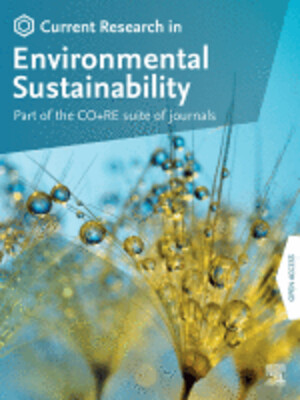
A positive deviance approach to understand gender relations and practices that support transformative adaptation: Insights from Kenya dairy households
- Bullock, Renee
- DuttaGupta, Tanaya
- Miriti, Philip
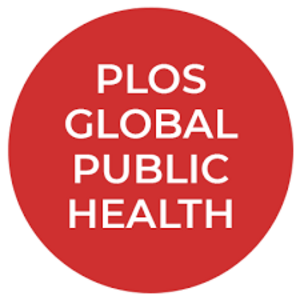
A framework for managing infectious diseases in rural areas in low- and middle-income countries in the face of climate change-East Africa as a case study
- Worsley-Tonks, Katherine E.L.
- Angwenyi, S.
- Carlson, C.
- Cissé, G.
- Deem, S.L.
- Ferguson, A.W.
- Fèvre, Eric M.
- Kimaro, E.G.
- Kimiti, D.W.
- Martins, D.J.
- Merbold, Lutz
- Mottet, A.
- Murray, S.
- Muturi, M.
- Potter, T.M.
- Prasad, S.
- Wild, H.
- Hassell, J.M.





